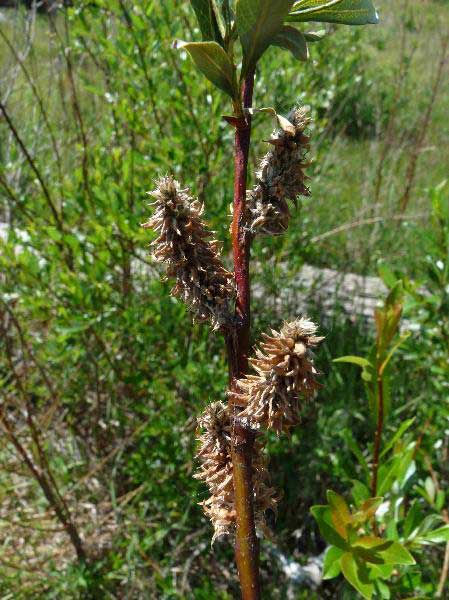Salix planifolia : Plane-leaved Willow
Taxonomy | Description | Biology | Ecology | Uses | Images | Range Maps
Taxonomy |
Scientific Name:Kingdom: Plantae Division:
Class: Dicoteldonae (two seed-leaves) Family: Salicaceae (Willow Family) Genera: Salix (Willows) (Classic Latin name for willow) Species: planifolia (Lat. planus= flat + folium= leaf, = flat-leaved) Synonym(s): S.phylicifolia English Name(s):Plane-leaved Willow, Flat-leaf/ Diamond-leaf/ Tea-leaf/ Willow First Nation Names:K'aii |
Description |
Structure:
Leaves:
Reproductive Parts:
Seed:
Not to Be Confused With:
|
Biology |
Physiology:
Life Cycle:Seasonal Cycle:
|
Uses |
Modern:Industrial: Medicinal: Food: Traditional Gwich'in:Folklore: Industrial: Medicinal: Food: Traditional Other:Folklore: Industrial: Medicinal: Food: |
Images |
|
Mature female catkins (photo by Jamie Fenneman, e-Flora BC) Glossy leaves (photo by Jamie Fenneman, e-Flora BC) Illustration from: Illustrated Flora of BC |
Range Maps |
|
World Range: North America; from NL to BC and AK, north to NT and NU.
In Yukon: North to about latitude 65N. |




